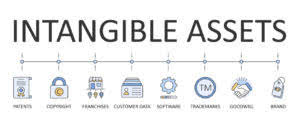
You’d need to be able to read a balance sheet to find the company’s total assets and liabilities in order to make these calculations. But overall, it’s a much less complicated formula than other calculations that are used to evaluate a company’s financial health. When calculating the shareholders’ equity, all the information needed is available on the balance sheet – on the assets and liabilities side.

Return on Equity vs. Return on Invested Capital
The reinvestment from the shareholders indicates their attitude towards the company, which is positive if the performance is good and as expected. However, repurchasing shares reduces stockholders’ equity because the company spends cash to buy them back. For example, if a company buys back $5,000 worth of shares, its equity decreases by the same amount. Stockholders’ equity can be referred to as the book value of a business, since it theoretically represents the residual value of the entity if all liabilities were to be paid for with existing assets.
Treasury Stock (Stock Buyback)
The formula for calculating SGR is ROE times the retention ratio (or ROE times one minus the payout ratio). Corporate capital allocation decisions unrelated to core operations (e.g. preferred dividends, share repurchases) can significantly impact the ROE. Therefore, ROE should be used in conjunction with other metrics such as ROA, ROIC, and EPS growth to evaluate the actual financial health of a company. The math calculation is the same process you use to calculate your semester average in school or the scoring average of your favorite athlete. A company’s average shareholder equity is calculated by taking the shareholder equity from at least two consecutive periods and taking the average. MVE, on the other hand, represents the total value of a company’s outstanding shares in the stock market.

What is shareholder equity (SE)?
Say that you’re considering investing in ABC Widgets, Inc. and want to understand its financial strength and overall debt situation. A year-end number is arrived at by using return on equity (ROE) calculation. You can use also get a snapshot idea of profitability using return on average equity (ROAE). For instance, in looking at a company, an investor might use shareholders’ equity as a benchmark for determining whether a particular purchase price is expensive. how to find stockholders equity On the other hand, an investor might feel comfortable buying shares in a relatively weak business as long as the price they pay is sufficiently low relative to its equity. An alternative calculation of company equity is the value of share capital and retained earnings less the value of treasury shares.
- A good rule of thumb is to target a return on equity that is equal to or just above the average for the company’s sector—those in the same business.
- These shares are no longer outstanding and don’t count toward earnings per share calculations.
- However, this situation may also arise in a startup business that is incurring losses while it develops products to bring to market.
- In terms of payment and liquidation order, bondholders are ahead of preferred shareholders, who in turn are ahead of common shareholders.
- For private entities, the market mechanism does not exist, so other valuation forms must be done to estimate value.
- In short, the asset value can be calculated by adding the firm’s equity and total debt or liabilities.
- It also yields capital gains for the shareholder and potentially dividends.
- When the balance sheet is not available, the shareholder’s equity can be calculated by summarizing the total amount of all assets and subtracting the total amount of all liabilities.
- Understanding the equity equation is critical from an investor’s point of view.
- As per the company’s balance sheet for the financial year ended on March 31, 20XX, the company’s total assets and total liabilities stood at $3,000,000 and $2,200,000, respectively.
- Stock buybacks, also known as share repurchases, involve a company purchasing its own outstanding shares from the market.
- What remains after deducting total liabilities from the total assets is the value that shareholders would get if the assets were liquidated and all debts were paid up.
Suppose that a company chooses to pursue an NPV-positive opportunity and funds the project with debt capital. In this scenario, ROCE would increase by a contra asset account fair margin since the amount of outstanding common equity has not changed, but net income has increased. However, the rise in net income was not due to management’s effective use of equity capital. Dividends are discretionary, meaning that a company is not under a legal obligation to pay dividends to common equity shareholders.
How do dividends affect stockholders’ equity?

The share capital represents contributions from stockholders gathered through the issuance of shares. Medical Billing Process To determine total assets for this equity formula, you need to add long-term assets as well as the current assets. For mature companies consistently profitable, the retained earnings line item can contribute the highest percentage of shareholders’ equity. In these types of scenarios, the management team’s decision to add more to its cash reserves causes its cash balance to accumulate.